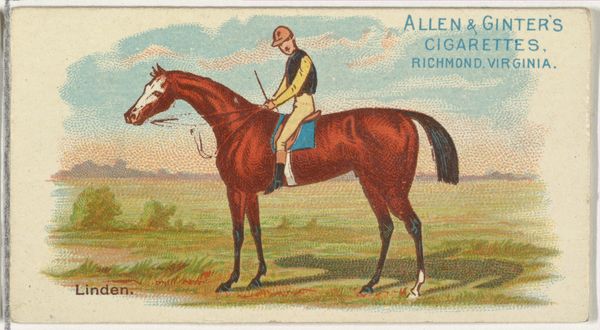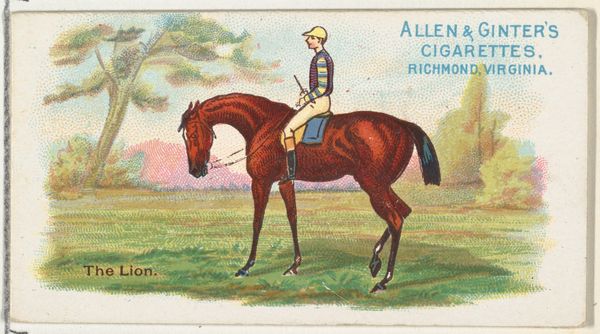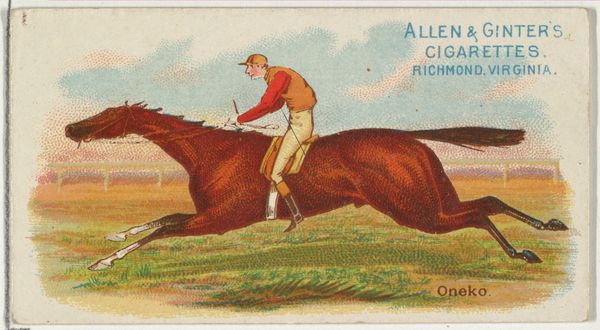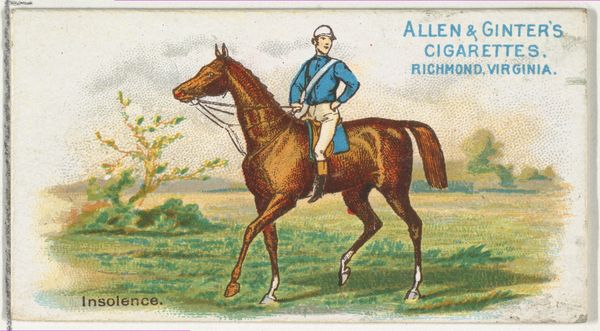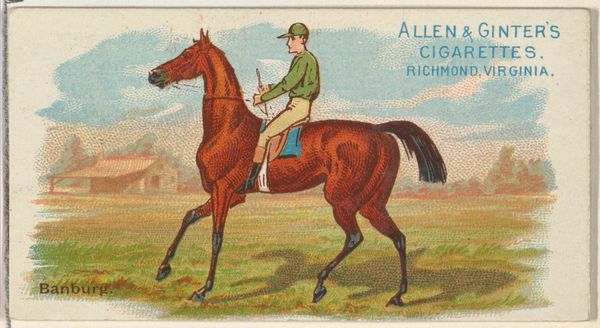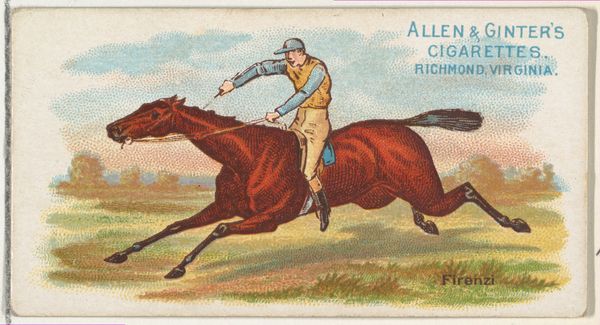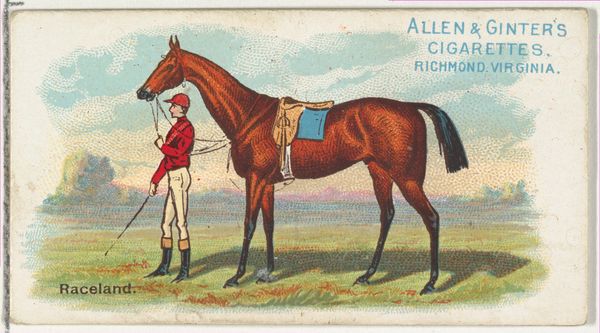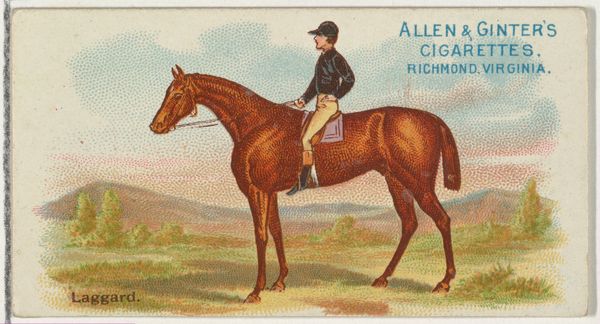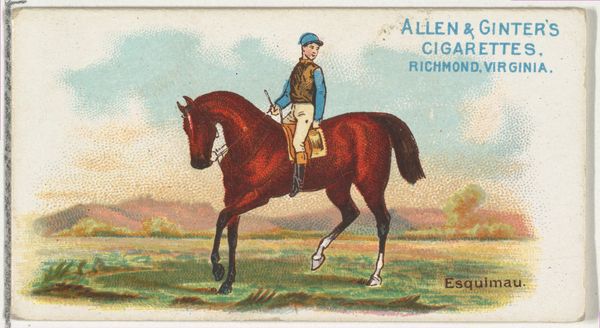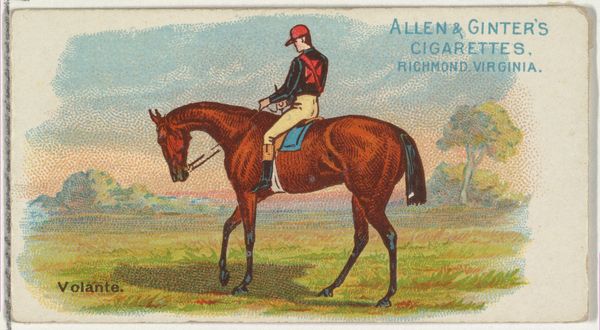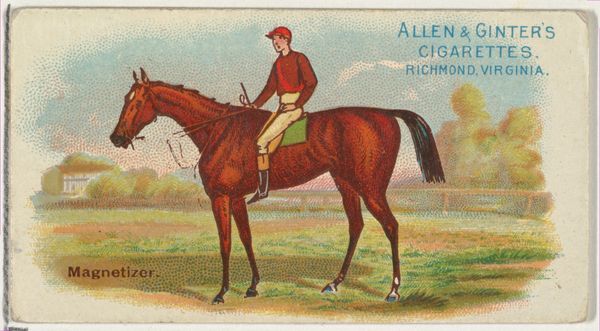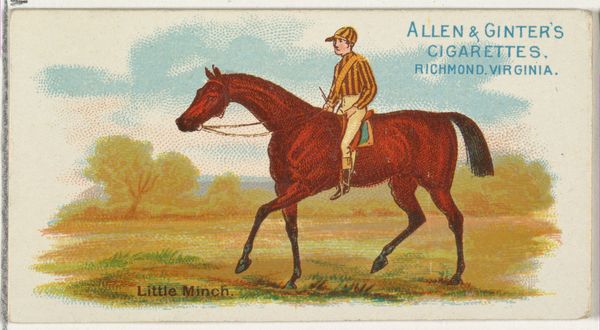
Elkwood, from The World's Racers series (N32) for Allen & Ginter Cigarettes 1888
0:00
0:00
drawing, coloured-pencil, print
#
drawing
#
coloured-pencil
# print
#
impressionism
#
caricature
#
coloured pencil
#
horse
#
men
#
genre-painting
Dimensions: Sheet: 1 1/2 x 2 3/4 in. (3.8 x 7 cm)
Copyright: Public Domain
Curator: Before us, we have "Elkwood, from The World's Racers series (N32) for Allen & Ginter Cigarettes," dating to 1888. It’s currently held at the Metropolitan Museum of Art. The piece, rendered in colored pencil and print, offers a glimpse into late 19th-century sporting culture. Editor: The immediate feeling I get is one of crisp movement. The colors are quite vibrant, the composition relatively simple and clear, focusing my eye on the horse and rider. I love the tension held between stasis and movement. Curator: Absolutely, but I find it equally crucial to recognize this image's origin as a cigarette card. These cards functioned within a specific cultural economy. They actively shaped perceptions of athleticism and race while subtly promoting tobacco use. The imagery projects a vision of elite sport, but also speaks to the broader implications of advertising and consumerism at that time. Editor: Certainly. Yet looking at it now, I see that tension achieved visually: the flattening of the background against the clear articulation of the horse's musculature; the stippling used for texture throughout the piece against the relative boldness of the jockey's colors. It’s such a straightforward image, but has compelling contrasts. Curator: And we must also consider what messages are encoded in that seemingly simple image. What ideas about masculinity, about leisure, were being communicated, and to whom? Consider also the labor that makes such leisurely events possible; all of this is omitted. The cigarette card becomes more than just an image. Editor: Right, because these structures aren’t created within a vacuum. I see your point that by looking into the semiotics within this image, we find cultural undercurrents reflecting societal attitudes of that period. In turn, what are we to make of this, of all cigarette cards being collected as a part of artistic practices today? Curator: Precisely! Examining these images critically enables us to understand how power operates subtly. And how it contributes to broader narratives of identity and social order—then, and potentially now. Editor: This analysis definitely adds a new lens through which to see the artwork. The initial impression gives way to more nuanced reflections. Curator: It’s a crucial layer of understanding the artwork’s lasting relevance. Editor: It is so! I have definitely discovered new facets that were imperceptible on my first impressions of the work.
Comments
No comments
Be the first to comment and join the conversation on the ultimate creative platform.
